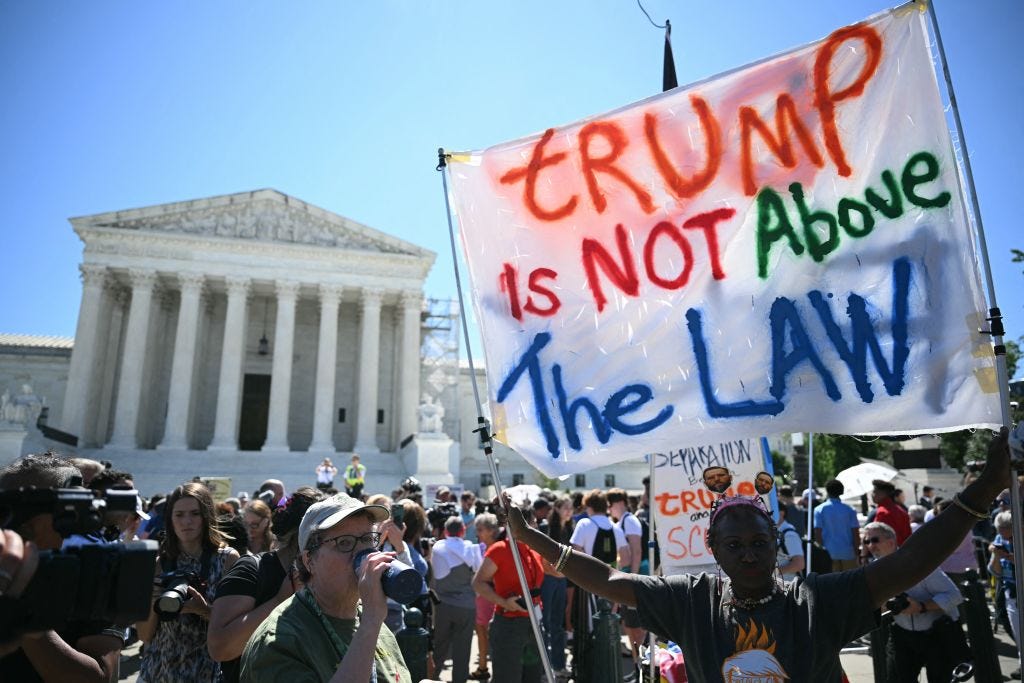Substacks
Islamism Killed My Partner. Why Won’t the West Fight It? Carine Azzopardi

On the evening of November 13, 2015, I recorded a video of my partner, Guillaume, laughing and dancing round the living room with our two daughters, aged four and seven. Just a few minutes later, he left our apartment in eastern Paris to go to the Bataclan concert hall.
A rock critic who wrote under the name Guillaume B. Decherf, he loved nothing more than good music, and was excited about seeing Eagles of Death Metal that night. In his review for Les Inrockuptibles, he had praised the band’s latest album. Its “sole aim,” he wrote, was “to give pleasure,” before signing off with a flourish: “Plaisir partagé!” A pleasure shared.
But I was worried. A journalist myself, I knew that Reuters had alerted the public to the potential threat of Islamist attacks. And concert halls had long been considered targets: their sole aim—to give pleasure—makes them particularly offensive to jihadis. I warned Guillaume, but he was determined: he told me life must go on in the face of bigotry, and I would never have stood in his way.
Two hours after he left, an alert popped up on my phone: “Massacre at the Bataclan.”
I must have called him 30 times.
Not knowing what else to do, I ran to the largest hospital in Paris, La Pitié-Salpêtrière, a 10-minute drive from the Bataclan. It was chaos, but I showed everyone I could the video of Guillaume laughing hours before and asked: Have you seen this man? No one had.
There was nothing left to do but wait. On my way home, I imagined walking through the front door to find him in the living room, dancing to metal music at top volume, swinging his hair around.
Shortly before noon the next day, a journalist friend of mine called from the morgue, with the terrible news I’d been waiting for: Guillaume, 43, was one of the 130 people murdered by Islamists at the Bataclan.
After Guillaume’s death, I needed to know exactly why he was taken from us. So I dedicated my journalism career to trying to understand the ideology of the people who killed him. Between 2015 and 2017, I covered attack after attack: a Catholic church in Normandy, a supermarket in Trèbes, a Bastille Day celebration in Nice. I was still grieving when, in September 2021, I started reporting on the trial of the twenty men accused of orchestrating the Bataclan attacks. The biggest trial in French history, it lasted ten months and heard from over 2,500 plaintiffs. For some reason, I assumed the court would examine how the ideology of Islamism had contributed to the deaths of so many innocent people. But day after day, as expert after expert took the stand, this important factor almost never came up.
I couldn’t stay silent. A couple of months into the trial, I wrote a column. “Ideology has an essential place in a terrorist trial,” I argued, “because terrorism is the choice to use violence in pursuit of a political cause, in this case Islamism.” I explained that the terrorists believed Islamic law should govern all public life, including in France. I said they directly opposed our country’s constitutional secularism, its laïcité.
The column resulted in an invitation to testify at France’s parliament. In a room full of experts, I gave the facts: over the last 40 years Islamist terrorism has caused the deaths of over 210,000 people, and France is the European country most often targeted: we have experienced 82 attacks since 1979. And yet, I said, “our country is so afraid of being accused of xenophobia or Islamophobia, it refuses to accurately name the insidious ideology that motivates these attacks.” The following year, nineteen of the 20 men were found guilty of involvement in the Bataclan massacre, which was named for what it was: a terrorist enterprise.
What I said in the French parliament shouldn’t be controversial. But it was only in private that people dared thank me. Shortly after the trial, I was contacted by a man who taught at a school in a Paris suburb, whose colleague had been beheaded in October 2020 on his way home from work. The murder of Samuel Paty made headlines around the world and should have been a cautionary tale—but since then, French public schools have continued to incubate Islamist ideology. So many of Samuel’s students were vulnerable to indoctrination, growing up in communities of poor Muslim immigrants where Islamist views had gained a foothold. A parent had once told him: “The laws of my religion supersede those of your Republic.”
This teacher kept telling me: “Schools in France are in a state of emergency.” But he was too petrified to speak out. So I offered to tell his story without naming him.
When his testimony was first published in September 2022, it got a lot of attention: he warned that another attack like the one on Samuel Paty was possible, if not probable; and soon, he was tragically proved right. On October 13, 2023, high school teacher Dominique Bernard was murdered outside his workplace by a young Chechen man, who shouted “Allahu akbar” as he stabbed Bernard to death.
One of the many things that blew my mind after these attacks were the reactions of the teachers’ trade unions. They spoke of liberty, equality, and fraternity—but not of protecting young people from extremist ideology. They condemned violence, but not terrorism—and never Islamism. Even in the aftermath of the attack on the Bataclan, the authorities didn’t shy away from identifying Islamist terrorism when they saw it. But since then, we have become reluctant to name our enemy.
This shift partly explains why people around the world are more likely to recognize the case of Samuel Paty than of Dominique Bernard, and more likely to recognize the case of Bernard than that of a German tourist, known only as Collin, who traveled to Paris last December to celebrate his 24th birthday—and was stabbed to death near the Eiffel Tower by a terrorist who had just pledged his allegiance to the Islamic State.
After this latest attack, the media established a profile of the killer. As soon as it was discovered that he had a history of mental illness, the case was closed: this tragedy could be chalked up to a failure of our medical system. We, the French, were to blame for Collin’s death—rather than the radical ideology his murderer subscribed to.
Here in Paris, most people have already forgotten about Collin. His murder doesn’t come up much in articles and debates, in the way that Samuel Paty’s did. When, earlier this month, online ISIS supporters called for “lone wolves” to attack people during this summer’s Paris Olympics—sharing a mocked-up image of a weaponized drone flying around the Eiffel Tower—no one mentioned his name. It’s almost as if the French have become desensitized to terror.
And it’s not just France. Two weeks ago, a police officer in Germany was killed trying to stop an attack on a blogger who’d been critical of Islam—and, as Peter Savodnik wrote in these pages: “It took four days for anyone with a uniform or in office to say publicly what was obvious, which was that this had something to do with Islamism.”
Islamism is winning a global publicity battle partly because it has found an ally in a phenomenon that was born in America: a phenomenon we call le wokisme. For the last few years, I’ve been tracing the links between these two ideologies, trying to understand how wokeism, which purports to have noble aims, has ended up enabling violence.
Both ideologies, for one, routinely use the word Islamophobia as a way to silence their critics. Researchers have also found that Western Islamists “speak the language of discrimination, anti-racism, internalized oppression, intersectionality, and post-colonial theory,” so that all acts perpetrated by a “marginalized” group can be justified as “acts of resistance,” reinforcing the view that Islam cannot and should never be criticized. Though they claim to defend Muslim minorities, some of their arguments are stunningly ironic. There are feminists, for instance, who claim that it is “Islamophobic” to suggest the hijab may contribute to the oppression of women.
In the wake of October 7, when Hamas terrorists invaded Israel, massacring 1,200 and kidnapping more than 200, we saw how successful this rationale has been in shutting down the critics. Even in the face of this evil, the Western world seemed uncertain: Was this a terrorist attack, or a valiant act of resistance by an oppressed people? The West soon made up its mind, as demonstrators flooded the streets in cities across Europe and America calling for the destruction of Israel.
The eagerness to defend Islamists in the U.S. is especially shocking. I was working in New York when two planes flew into the World Trade Center; I interviewed Americans as they fled across Brooklyn Bridge that day, some of them gray with dust, others covered in blood. September 11 had started as just another normal day in New York—just as October 7 had, in Israel. At the time, 9/11 was denounced by people across the political spectrum for what it was: a brutal series of Islamist terrorist attacks. Now, in the same city, 10/7 is being used as a rallying point to support terrorists who have the exact same aims.
Can America’s memory really be so short?
Carine Azzopardi is a journalist, essayist, and author of two books: “The Resignation That Kills” and “When Fear Governs Everything.” Follow her on X @CarineAzzopardi.
For more on this subject, read Peter Savodnik’s recent piece, “Islamists Keep Stabbing People. Why Aren’t We Talking About It?” and subscribe to The Free Press today:
Substacks
The Takeaways from Three Supreme Court Rulings Jed Rubenfeld

Yesterday the Supreme Court published its decision in the Trump immunity case. Depending on who you believe, it was either a righteous victory for the former president—or the beginning of the end of democracy as we know it.
This politically high-stakes ruling was just one of a series of important judgments decided by the court at the end of a busy term. And reader, a confession: we’ve been too preoccupied by all the debate fallout to properly chew through it all. And so, in search of some much-needed clarity, we dropped Jed Rubenfeld a line. Jed is a professor of constitutional law at Yale Law School and, whether in the classroom or on his YouTube show Straight Down the Middle, he demonstrates his knack for stripping away the hyperbole that accompanies so much legal commentary these days. In other words, he explains complicated legal cases in a way that the layman can understand. So here’s Jed, explaining the Trump immunity and two other important rulings.
The Presidential Immunity Case
Should a former president be immune from prosecution after leaving office? Believe it or not, we had no law on that issue for two hundred years. There didn’t need to be any: until now, no former president had ever been criminally prosecuted for actions taken during his presidency. But Trump is being prosecuted for (among other things) his involvement in January 6, so the immunity issue had to be confronted.
Trump’s lawyers argued for complete immunity. The special prosecutor, Jack Smith, argued for zero immunity, and the D.C. Circuit basically adopted the prosecution’s position. The Supreme Court rejected both extremes, laying down a new test for presidential immunity and giving something to both sides.
At its most simple, the Court’s new test first asks whether the conduct in question was an “official” act—i.e., an exercise of the president’s powers. If it was not an official act, then there’s no immunity at all. If it was official, the next question is whether the president was exercising a “core” constitutional power. If so, then there’s complete immunity—no prosecution is permissible. But if we’re dealing with an official act outside the core, then “presumptive” immunity applies—the president will be presumed immune unless the prosecution can rebut that presumption. What does that mean? Well, no one knows exactly, because it’s new law.
It will now be up to the lower courts to apply those standards. The practical upshot: contrary to the prosecution’s hopes, there’s no way this case can be tried before the election. With more appeals likely, applying the Court’s new tests to the various allegations against Trump could take years.
The Chevron Case
You’ve read by now that the Court overruled Chevron, but you probably have no idea what that means. Here’s the story.
Administrative agencies do the bulk of federal lawmaking. Is that constitutional? Yes, said the Court eighty years ago. Congress can delegate legislative powers to agencies, and agencies can make law as long as they stay in their lane—i.e., within the scope of the powers Congress gave them.
But who decides if agencies are staying in their lane? Who gets to interpret the statutes that give the agencies their power? You might think statutory interpretation is a judicial prerogative. But no. The agencies get to interpret their own statutes, said the Court in the famous 1984 Chevron case.
Not anymore. In the just-decided Loper Bright case, the High Court overturned Chevron, telling lower courts that it’s up to them to interpret the relevant statutes. Critics make two points. First, competence. As Justice Kagan asked in her dissent, how is a court supposed to decide when an alpha amino acid polymer qualifies as a “protein” under the food and drug statutes? With Chevron gone, courts may find themselves struggling with questions they can barely understand.
But the deeper question is about power. According to Justice Kagan, the majority’s decision is a “grasp for power”—with the justices getting the last word on more and more issues. That’s the second big critique, but it may be overstated. Read carefully, the majority opinion in Loper Bright gives Congress—not the courts—the last word. If Congress wants agencies to have the interpretive power, and require courts to defer to agency interpretations, Congress just has to say so.
Bottom line: Loper Bright might not be as big a deal as some say. The Chevron doctrine was already full of holes. Loper Bright may ultimately be seen less as a judicial power grab and more as part of a line of recent Supreme Court decisions reimposing needed checks and balances on federal agencies.
The Social Media Censorship Case
In a case originally called Missouri v. Biden, a federal district court enjoined the Biden administration’s years-long, multiagency campaign to get social media platforms to censor disfavored content, calling that campaign “arguably the most massive attack on the freedom of speech in United States history.” But the Supreme Court reversed that injunction in the just-decided Murthy v. Missouri.
Full disclosure: I’m a lawyer in many cases challenging social media censorship, including a case connected to Murthy in the lower courts. So for me, the Supreme Court’s decision is disappointing. I view government involvement in social media censorship as a major First Amendment problem, especially when the speech being blocked or shadowbanned is factually accurate or political opinion, like the Hunter Biden laptop story, which was suppressed by all the major platforms in the run-up to the 2020 election.
But here’s what you need to know. Murthy did not reach the merits. It reversed solely on the basis of lack of standing. According to the Court, the plaintiffs hadn’t shown that the government had specifically targeted them for censorship and even worse, the plaintiffs had shown only that they’d been censored in the past. That wasn’t enough, said the Court, to establish standing for an injunction.
Because the Murthy decision is based on standing, the fight is far from over. Murthy leaves the door open for other plaintiffs, with firmer standing, to bring essentially the same claims. For more details on this, see my Murthy episode on Straight Down the Middle:
One more thing on Murthy. . . Free Press contributor Jay Bhattacharya was one of the plaintiffs in the case. He wrote about it for us when they won in a lower court last year. We asked him what he made of the Supreme Court’s decision.
He told us that he was as optimistic about their chances in a fresh case in a lower court, but said that “our loss in the Supreme Court points to the need for Congress and voters to act to protect American free speech rights now that it is clear that the Supreme Court will not do so. Congress should pass a law prohibiting the executive branch and associated federal bureaucracies from censoring Americans via direct and indirect pressure on social media.”
He added that “In a sense, by exposing and publicizing the government’s censorship operation, which cannot survive in the sunlight, we have already won despite the disappointing result in the Supreme Court.”
Jed Rubenfeld is professor of constitutional law at Yale Law School.
Become a Free Press subscriber today:
Substacks
Niall Ferguson: The Democratic Party Awaits Its Gorbachev Niall Ferguson

The most impressive feature of Thursday’s debate between Brezhnev and Andropov—sorry, Trump and Biden—is that anyone watching was in the least surprised by what it revealed.
The president is senile. The former president is a blowhard. Both these truths have been obvious for years. Yet somehow The New York Times editorial board, the hosts of Pod Save America, and numerous other eminent liberal authorities were shocked by what CNN broadcast from Atlanta.
It all put me in mind of Donald Rumsfeld’s typology of knowledge from back in 2002. “As we know,” he told journalists at a briefing about the alleged ties between Saddam Hussein and al-Qaeda, “there are known knowns; there are things we know we know. We also know there are known unknowns; that is to say we know there are some things we do not know. But there are also unknown unknowns—the ones we don’t know we don’t know. And if one looks throughout the history of our country and other free countries, it is the latter category that tends to be the difficult ones.”
This framework can be traced back to a 1955 paper by the psychologists Joseph Luft and Harrington Ingham. Rumsfeld himself attributed it to NASA administrator William Graham, with whom he had worked in the 1990s on the congressional Commission to Assess the Ballistic Missile Threat to the United States.
But the category Rumsfeld omitted—the one I’ve been thinking of since Thursday—is the category of “unknown knowns.” These are perfectly obvious dangers that decision-makers unconsciously or willfully ignore because they do not accord with their preconceptions.
Last year we saw another striking example of an unknown known. After the pogrom carried out by Hamas against Israel on October 7, 2023, elite university campuses erupted with protests that in many cases were pro-Hamas or overtly antisemitic. Some of the world’s most brilliant investors were shocked to discover that the elite colleges they have been supporting with their hundreds of millions of dollars have enrolled or employed a substantial number of leftists whose “progressive” views include variants of antisemitism.
But this has been clear to anyone who bothered to visit the Harvard or Yale campus over the last decade.
The question is: Are we dealing here with genuine myopia? Or are the people professing to be shocked by Harvard antisemitism or Biden’s senility more like Captain Renault in Casablanca, who professes to be “shocked, shocked” that people are gambling at Rick’s nightclub, even as he pockets his winnings? The answer is that they are much closer to Captain Renault than they would care to admit to themselves because, like him, they belong to a thoroughly corrupt political system.
People love to ask: “Are these really the best candidates we can come up with?” What they mean is: “Why has the American political system provided voters with this terrible choice between two embarrassing old men for the post of president?”
It is a hard question to answer if you refuse to accept that our system today evinces similar symptoms to that of other degenerating polities, notably the Soviet Union in the 1980s. (There are other examples. The last communist leaders of Bulgaria, Czechoslovakia, East Germany, Hungary, and Romania were all in their seventies.)
Since my latest column in these pages—which made the argument that we’ve recently become more like the Soviets than we want to face—there have been dissenting opinions, from Jonah Goldberg and Noah Smith, among others. However, as Ross Douthat acknowledged, one undeniable common factor is a leadership selection process that produces embarrassing old men.
There are five structural reasons for American political senescence.
Substacks
June 30, 2024 Heather Cox Richardson
-

 Awakening Video10 months ago
Awakening Video10 months agoThis is What Happens When You Try to Report Dirty Cops
-

 Substacks3 months ago
Substacks3 months agoTHE IRON-CLAD PIÑATA Seymour Hersh
-

 Substacks9 months ago
Substacks9 months agoThe Russell Brand Rorschach Test Kathleen Stock
-

 Substacks10 months ago
Substacks10 months agoA real fact-check of Trump’s appearance on Meet the Press Judd Legum
-

 Substacks8 months ago
Substacks8 months agoLetter to the Children of Gaza – Read by Eunice Wong Chris Hedges








